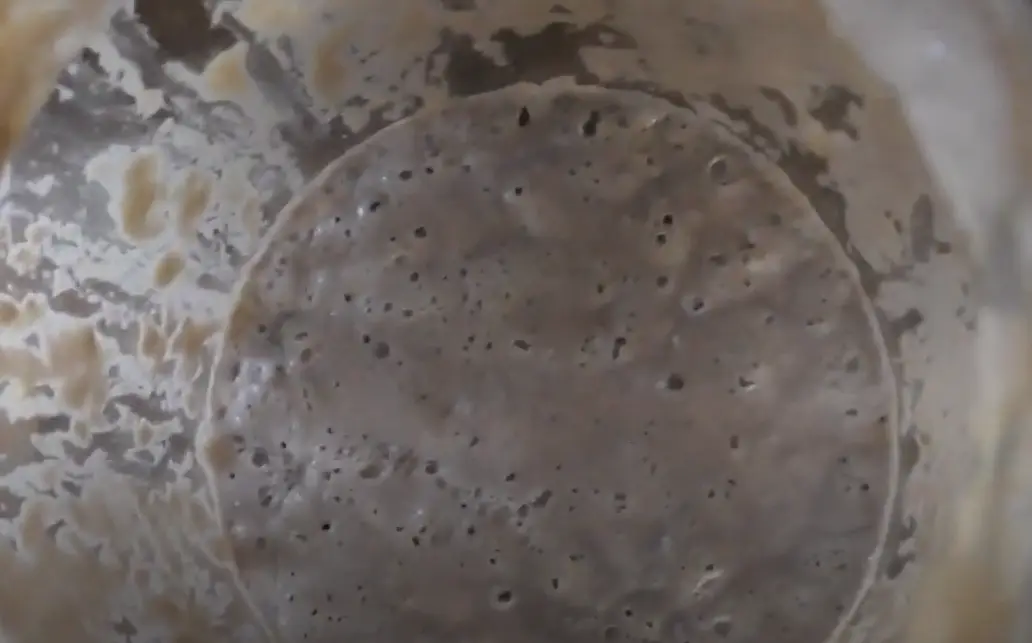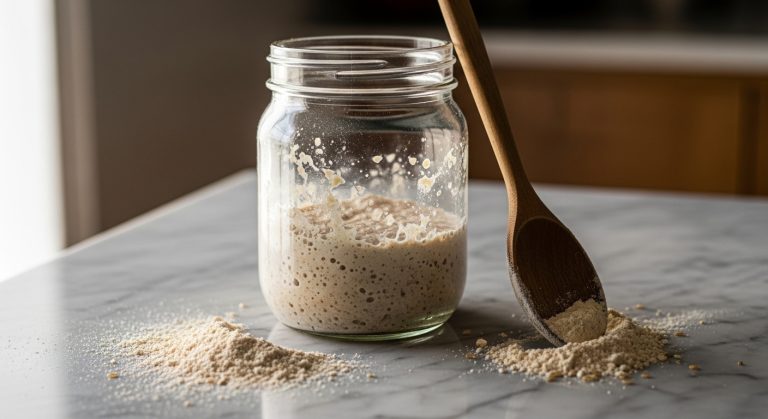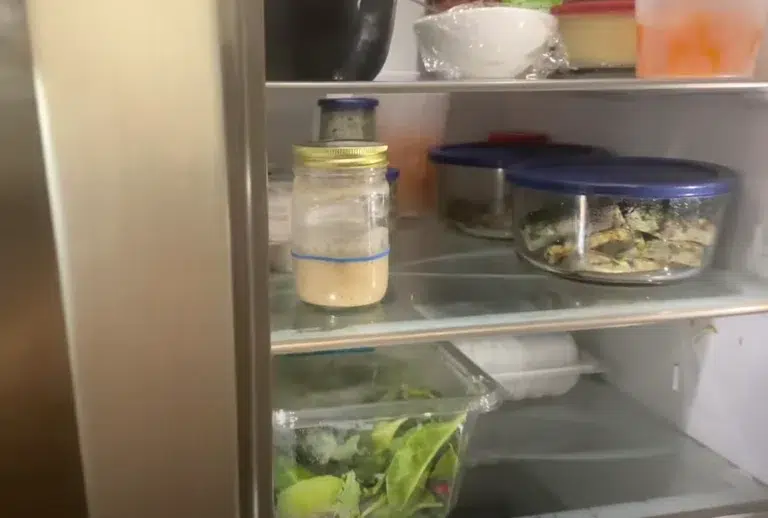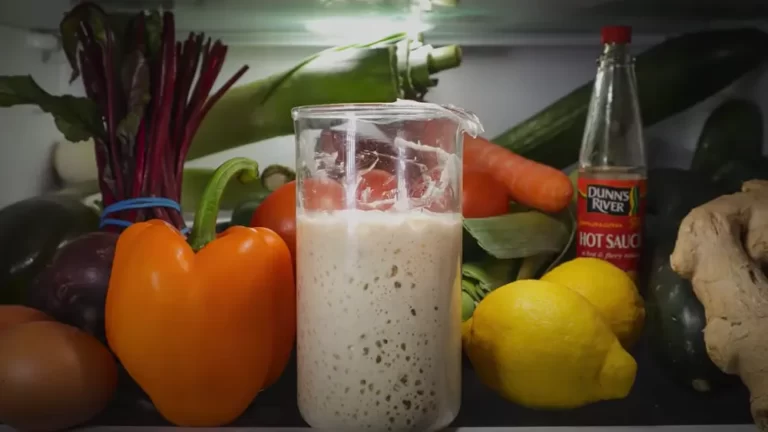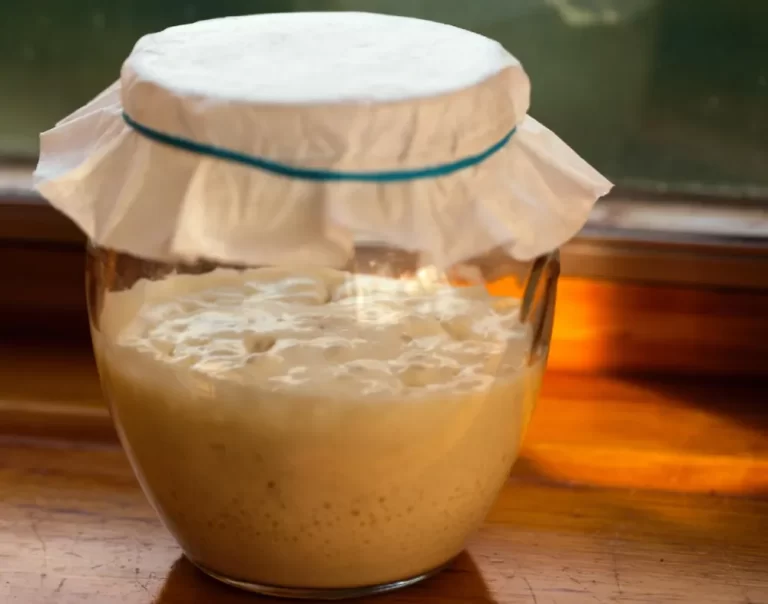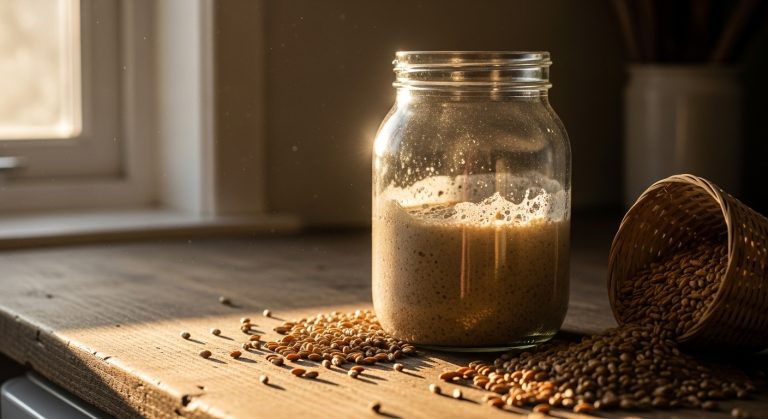How do I know If my Sourdough Starter is Dead? Read the Vitality Signs
A healthy sourdough starter is a secret to achieving that perfect, crusty loaf. However, there may come a time when you might notice your starter culture isn’t as active as it used to be.
And you wonder if it’s over.
Like any natural living thing, it will decay without nourishment. But, before you panic and toss it out or start again, take a moment to decipher if it truly is dead or just dormant.
So, how can you tell if your starter is dead or not?
Sourdough starters sometimes don’t bubble but look normal, so you can test their activity with a float test. Also, new baby starters haven’t had much aroma or bubbles for the first few days, so if your starter is new, it’s not dead, just inactive.
However, some surefire signs will help you tell if your sourdough culture has croaked. Any off-putting odors, such as alcohol, vinegar, or something rotten, slimy texture, discolored liquid on the surface, or mold, are all telltale signs that your starter is dead.
If you notice any of these indicators, it’s best to discard them and start a new batch.
We’ll go over all the signs that your starter has passed on and how to determine if your starter can still be revived or if it’s time for a new one. So, don’t just give up hope yet.
Keep reading for more information about how and why your sourdough might be failing and what you can do to keep your starter alive.
Understanding Sourdough Starters: The Dynamic Interplay of Yeast and Bacteria
Before discussing how to tell if your starter is dead, let’s first establish what’s happening in the wild world of sourdough.

A sourdough starter is essentially a mixture of flour and water that has been left to ferment over some time. During this fermentation process, wild yeast and bacteria, the two key players in the sourdough game, are introduced.
Wild yeast consumes the carbohydrates (sugar) in flour and produces carbon dioxide bubbles, making your dough rise and fluff. The bacteria plays a different role by producing lactic acid, which gives sourdough its unique flavor and lengthens the shelf-life of baked goods due to its preservative qualities.
Together, these two organisms create a symbiotic relationship, multiply and work together to create the perfect environment for a complex and ever-shifting ecosystem within the starter. The balance between these two microorganisms gives each sourdough starter its unique flavor profile and behavior.
Now that you understand what’s going on in your starter culture, let’s dive into how to tell if your starter is truly dead or just dormant.
Signs that Your Sourdough Starter is Dead
Checking for Activity
If you’re trying to figure out whether your sourdough starter is still active or not, the first thing to do is check for signs of activity.
No Bubbles
A lively starter should be bubbly and active, with visible bubbles on the surface and throughout the mixture. If you don’t see any bubbles, or if they’re few and far between, it’s a sign that your starter may not be thriving.
No Rise
Another telltale sign is that the starter will increase in volume as the yeast cells multiply and create carbon dioxide. When you feed your starter, it should rise and double in size within a few hours.
If your mixture isn’t showing any signs of activity or rising, it may be a sign that the yeast is no longer active.
Float Test
Another test you can perform to check for activity is the float test.
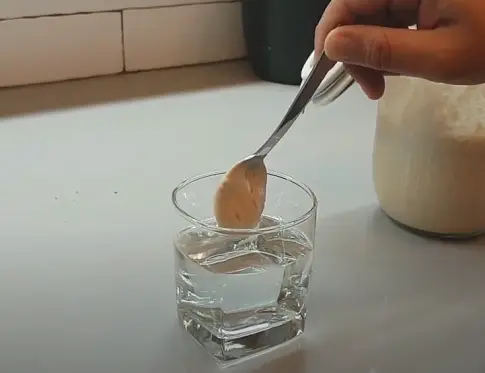
To do this, drop a small spoonful of starter into a glass of water. If it floats, that means that the yeast is producing enough gas to give it buoyancy.
If your sourdough starter is not producing bubbles and gas, it may have become inactive due to a lack of bacteria, wild yeast, and other necessary micronutrients. This can occur if the starter is not fed or used regularly, as the bacteria and wild yeast will die without regular nourishment.
If this is the case, you must feed it and see how it responds. To do this, mix some flour and water into the mixture and let it sit at room temperature for 12-24 hours before checking for activity.
If there are still no signs of life after a few days, then it’s best to discard the starter and begin with a new one.
Smell
A healthy sourdough starter should have a pleasant, acidic smell. The aroma will generally be similar to that of a freshly baked loaf of bread and may include subtle notes of tangy apple or pineapple.
Lactic acid bacteria (LAB) play an important role in the growth and development of sourdough starters. They are responsible for producing the characteristic acidic scent associated with these starters.
However, if a starter is neglected or not maintained properly, it can become contaminated by acetic acid bacteria (AAB). This can lead to various off-putting odors such as vinegar, rotten eggs, alcohol, or rancidness.
The presence of unwanted microorganisms in the starter is largely to blame for this occurrence. As the yeast consumes sugar and produces alcohol, scent molecules accumulate, producing that unpleasant smell.
Similarly, AAB produces acetic acid, which often has a sour odor reminiscent of vinegar or pickles. If you notice any of these odors in your starter, it is likely time to discard the batch and begin with a new one.
To test for bad smells, scoop out a spoonful and sniff it quickly. If it passes the test,, you should be good; if not, you should start fresh with new ingredients and equipment.
It’s also important to keep your starter clean and well-nourished by regularly feeding it flour and water and replenishing its nutrients. Regularly discarding part of the starter will also help prevent bacterial overgrowth, which can result in an undesirable aroma.
In cases where contamination has occurred, adding salt or using an oxygen-free environment can help inhibit further growth of the offending organisms while allowing lactic acid bacteria colonies to reestablish themselves.
Though unpleasant odors are never desirable in food products, being aware of their potential causes can help protect your sourdough starter from contamination and ensure its continued production of delicious bread time after time.
Color and Texture
Sourdough starter is supposed to have an off-white or beige color. It can be a reliable indicator of its overall health.
This color indicates the presence of a healthy community of lactic acid bacteria and wild yeast strains. These microorganisms work together to create the distinctive sourdough flavor we love.
However, if you notice a color change, it could indicate something is not right. Then, is it still safe to use?
Here are the common odd colors and reasons for unhealthy sourdough starters.
Odd Colors and Reasons for Unhealthy Sourdough Starters
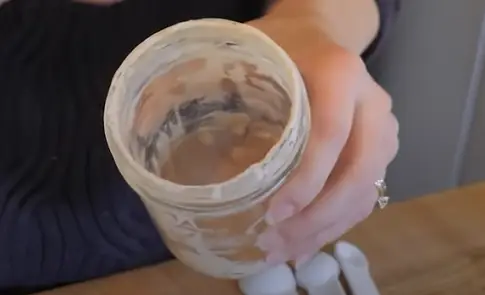
Pink or Red
If you see a pink or red color on the surface of your sourdough starter, it’s a sign of bad bacteria like Leuconostoc mesenteroides. These bacteria can cause the sourdough to turn slimy or rope-like in texture, emitting a foul odor.
This can happen when your sourdough starter is exposed to warm temperatures or not properly fed.
Yellow or Brown
If your sourdough starter has turned yellow or brown, mold may have contaminated it. Mold can grow on the surface of the sourdough starter or the sides of the container holding the sourdough.
This can happen when the sourdough is not properly fed or exposed to too much oxygen. The mold can produce toxins that could make you sick if ingested.
Gray or Black
If your sourdough starter has turned gray or black, it’s a sign of Necrotrophic mold. These can grow on the starter surface and release mycotoxins.
This can happen when the sourdough starter is exposed to too much moisture, leading to contamination.
Odd Textures: Indicators of a Faulty Sourdough Starter
The consistency of the starter is typically thick and gooey, with a texture similar to wet sand or thick pancake batter. Looking closely, you might see little air pockets or bubbles forming on the surface as the yeast colonies become more active.
The bubbles signify the presence of the yeast in the mixture, while the lightness signifies the starter’s optimal activity.
- If your sourdough starter has grown heavier or denser, it may indicate a dead or inactive starter. A thicker texture also makes stirring and mixing the starter difficult, leading to problematic outcomes.
- On the other hand, if your starter becomes too runny, losing its form and thickness, it becomes over-fermented. It can signify that the bacteria have taken over the yeast, leading to the acidic taste that makes sourdough bread delicious.
However, an over-fermented starter can become too sour and have excessive acidity, hindering the bread’s quality.
- Another texture issue is the appearance of curdled or separated substances in the sourdough mixture. A curdled or separated starter shows that the liquid and solid components have separated, leading to inactive bacteria and a dead starter.
Separation in a sourdough starter also reveals too much acidity, which can be unpleasant and challenging to control, affecting the bread’s texture and taste.
- A less common issue in sourdough starters is the appearance of a mucus-like, slimy texture. This texture could indicate an overgrowth of bacteria, mainly due to temperature issues, which is unsuitable for sourdough’s yeast activity.
This condition can also cause a foul smell and an odd taste, indicative of an unfit starter, which can cause problems with your end product.
What Causes A Starter to Go Bad? Common Mistakes and Tips for Success
A few factors can cause your sourdough culture to go bad. Identifying and understanding these factors can help you prevent your starter from dying.
Temperature
One of the most common mistakes when starting a sourdough starter is failing to monitor the temperature. For bacteria and wild yeast to thrive in the starter culture, it is essential to maintain an optimal temperature between 70-80°F (21-27°C) and keep the starter away from drafts.
If the temperature is too hot or cold, the bacteria and wild yeast may be killed off, leaving the starter inactive.
Starvation
Another common mistake people make when starting a sourdough starter is not feeding it regularly enough. Starving a sourdough culture of food can cause it to become inactive or even die off completely.
It’s important to feed your starter regularly with fresh flour and water to keep it active.
Feeding Ratio
It is important to keep a 1:1:1 ratio of starter, flour, and water when feeding the starter. This will provide enough food for the bacteria and yeast to ferment properly.
If you feed too much flour or water to the starter, then it can become overly active and produce an acrid flavor. Any random flavor changes in your starter could indicate that you use an incorrect ratio.
Contamination
Contamination is a major factor that can cause a sourdough starter to go bad. Suppose you’re using utensils exposed to other microorganisms or storing your starter in an environment where other bacteria and wild yeast could get into the mix. Your starter may become contaminated, inactive, or even die off in that case.
It’s important to ensure you only use clean utensils when handling your starter and storing it in a sterile environment. It’s also wise to avoid adding ingredients like milk, honey, or sugar to the starter, as these can cause contamination and lead to an inactive starter.
Storing Your Starter
When storing your sourdough starter, leave room for expansion in the container. The starter will continue to grow and increase as it ferments, so you want to ensure that the container you store in is large enough to accommodate that growth.
Make sure that the container you use for storage is airtight. This will help prevent bacteria or wild yeast from getting into the starter and spoiling it.
Also, keep it at an optimal temperature between 70-80°F (21-27°C). If you store your starter in the refrigerator, feed it once a week to keep it active.
Age
The age of your starter can also affect its health. Over time, the bacteria and wild yeast in the mixture can weaken or even die off completely. It’s important to start a new starter every few months to ensure your sourdough culture is as healthy and active as possible.
By following these tips and avoiding common pitfalls, you can help keep your sourdough starter alive and healthy to enjoy your delicious sourdough creations.
Reviving Your Sourdough Starter
If you’ve noticed that your sourdough starter is not rising or has a grey liquid on the top, it’s time to take action. Don’t worry; reviving a dead starter is not rocket science, and you can easily do it with these six simple steps:
Step 1: Remove any discolored or grayish liquid
Before you start, you need to remove any discolored or grayish liquid accumulated on top of the starter. This liquid is called “hooch,” and it’s a sign that the starter has run out of food.
Step 2: Feed your starter with equal parts flour and water
Now, it’s time to feed your starter with equal flour and water. Use fresh, unbleached flour and filtered or bottled water at room temperature. Depending on your preference, you can use any flour, such as bread flour, all-purpose flour, or whole-grain flour.
Step 3: Mix the flour and water with your starter
Mix the flour and water with your starter until it’s well combined. After mixing, you should have a thick, sticky, and bubbly dough-like consistency.
Step 4: Cover the container
Cover the container with a cheesecloth or a clean kitchen towel, and let it sit warmly for at least 12 hours. This will encourage the yeast and bacteria to feed on the flour and water mixture and grow.
Step 5: Repeat the feeding process
After 12 hours, repeat the feeding process with equal parts of flour and water. Again, mix well and let it sit in a warm place for another 12 hours.
Step 6: Observe the signs of life
After 24-36 hours, your starter should show signs of life. Look for bubbles forming on the surface, and the starter should be able to double in size after feeding. You can now use it to make your favorite sourdough bread or baked goods.
Tips for Preventing a Sourdough Starter from Dying in the Future
To ensure that your sourdough starter thrives, it’s essential to maintain a consistent feeding schedule, store it properly, and use the right type of flour. Here are some tips to help prevent your sourdough starter from dying in the future.
Tip 1: Feed your starter regularly
The key to keeping your sourdough starter healthy is to feed it regularly. You should feed your starter at least once daily or every 12 hours if you want a more active starter. Feeding it regularly will keep the yeast and bacteria alive and healthy.
Tip 2: Store your starter properly
You should store your sourdough starter in an airtight container in the refrigerator when you’re not using it. This will slow the fermentation process and keep the yeast and bacteria dormant until you can use it again.
Tip 3: Use the right type of flour
Using the right type of flour is essential for maintaining a healthy sourdough starter. You should use unbleached flour, as bleached flour has been stripped of its nutrients and can affect the growth of your starter. You can also experiment with different types of flour, such as whole grain or rye flour, to add more depth and complexity to your sourdough bread.
So, as you can see, reviving a dead sourdough starter is not impossible. If you follow these steps and take care of your starter, you can do wonders with it.
What happens if you use a bad sourdough starter?
Well, you won’t get the results you want.
It is obvious that a bad sourdough starter can lead to a weak rise. This means that your bread won’t be as fluffy and light as it should be but rather dense and heavy. The bad starter may have lost some of its yeasting power, making it less effective at creating those lovely bubbles that make your bread rise.
It can also affect the taste of your bread. Instead of that classic sourdough tang, you may end up with a bland loaf. The bad starter may not contain enough beneficial bacteria that give sourdough its unique flavor.
And lastly, using a bad sourdough starter can introduce harmful bacteria into your bread. This can be a health risk, especially for people with weakened immune systems.
So, what should you do if you suspect your sourdough starter is bad? You may need to throw it away and start from scratch.
However, before you do that, try to revive it by feeding it with fresh flour and water over several days. This will help to restore its yeasting power and beneficial bacteria.
How do I know if my sourdough starter has bad bacteria?
Sourdough starters can also be a breeding ground for bad bacteria if not properly cared for. There are a few signs to look out for.
- A sourdough starter that has gone bad will have a foul odor. This usually smells like rotting or sour milk.
- The texture of the starter may change. It might become slimy or bubbly rather than the usual thick, stretchy consistency.
- The starter can also become lumpy and have an off-color. It may turn yellow, green, or black.
If you notice any of these signs, it’s important to discard your starter and start over. Bad bacteria can harm your health, so it’s best to err on the side of caution.
Don’t Give Up on Your Baking Buddy
Don’t be disheartened if your sourdough starter has kicked the bucket. It’s a natural process and a learning curve for us all.
Sourdough baking is both a science and an art. The more you practice, the more you’ll feel your interpretation of the perfect loaf.
Knowing how to read the signs of a healthy and unhealthy sourdough starter can help you keep your culture alive and thriving. Keep an eye out for bubbles, gas, smells, color, and texture changes in your starter to see if it’s still active or needs to be replaced.
Have fun experimenting with different flours, hydration levels, and fermentation times.

